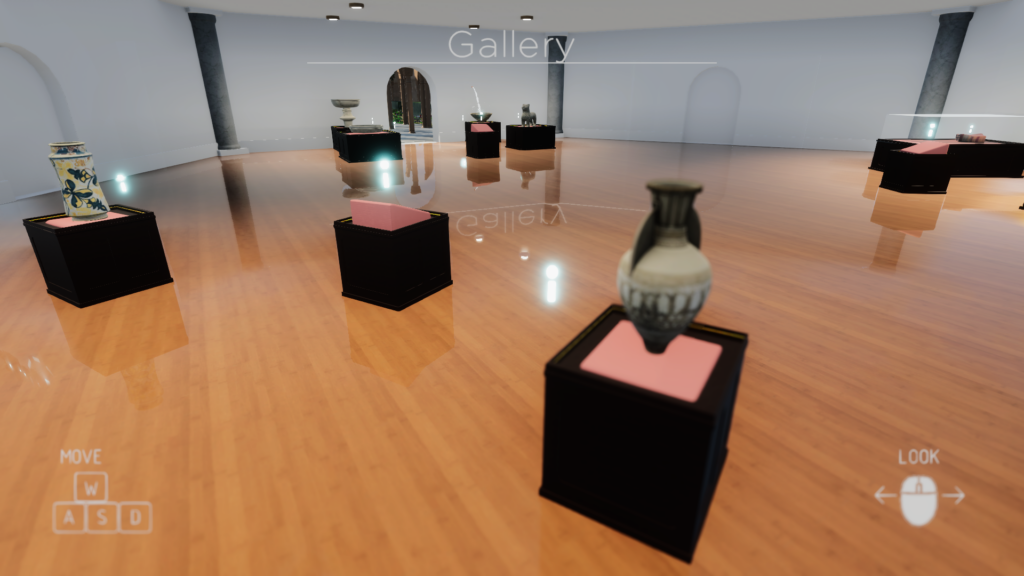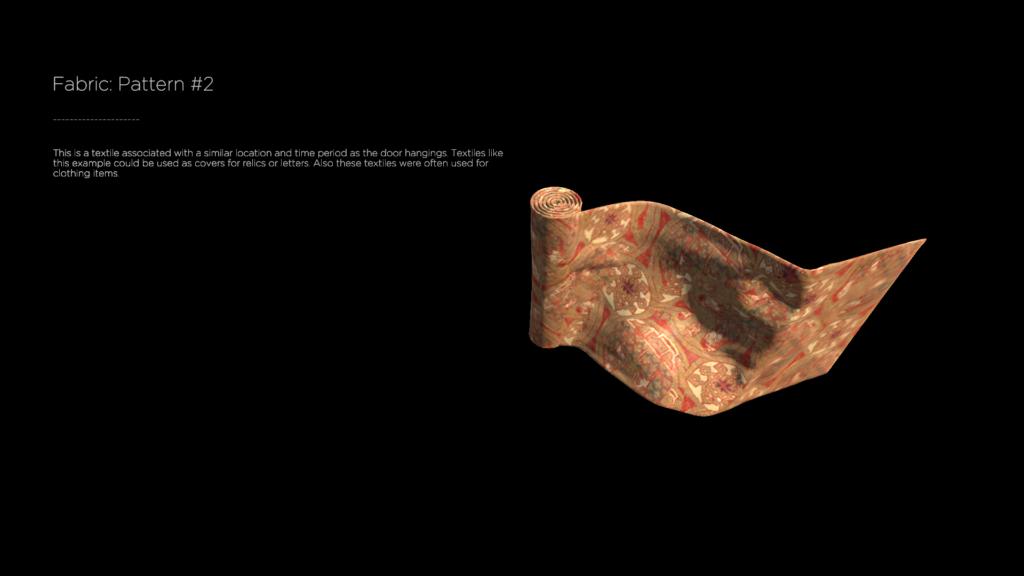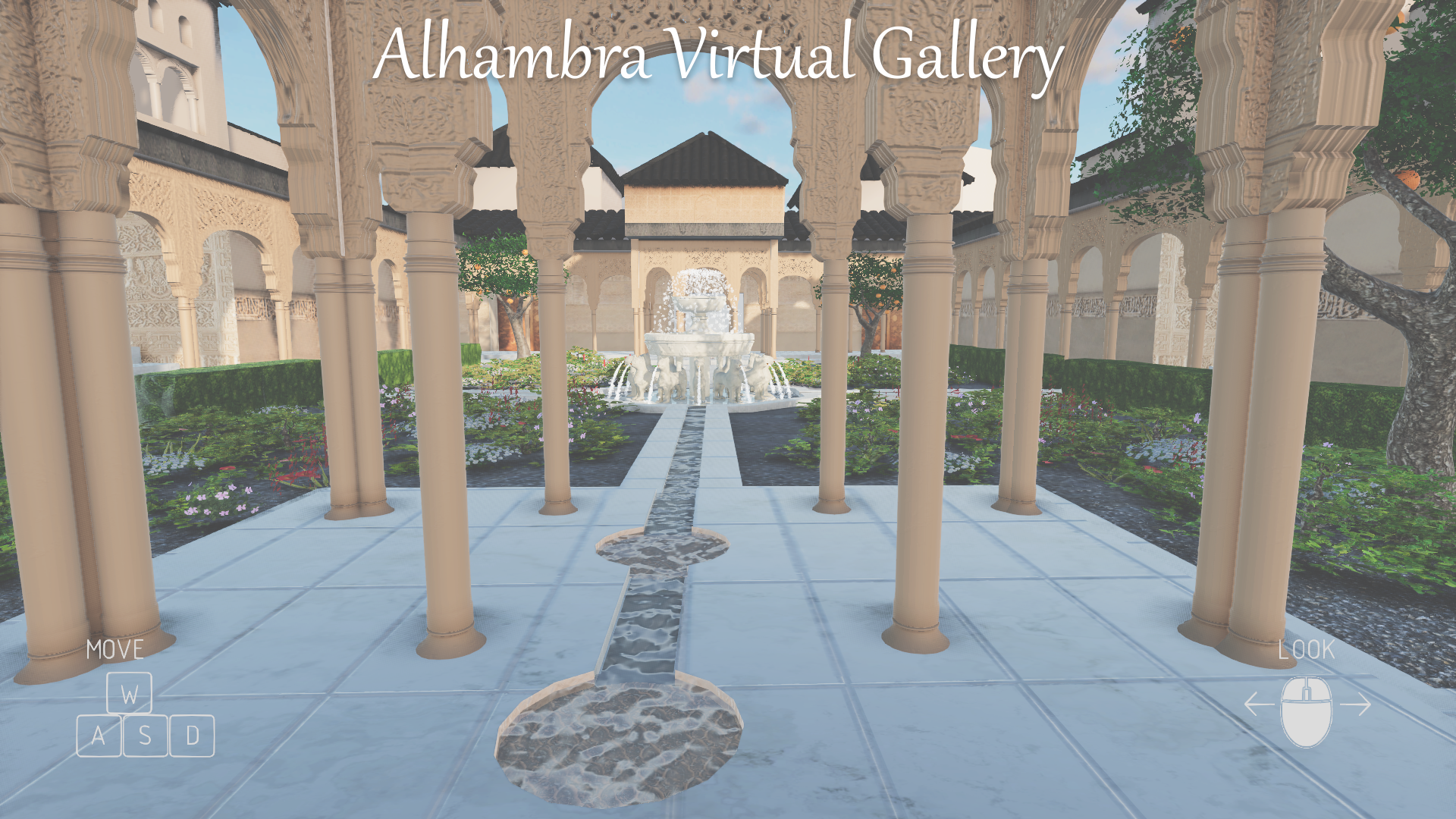We’ve been adding the finishing touches to the Alhambra project we’re working on with an art history class from Pomona College. In last week’s post, we showed some screenshots of the first student-furnished scene. Since then, we’ve heard back from the other student groups and have been busy working to incorporate their objects, research, and text into their respective areas in the palace.
For anyone interested in playing the finished project, we’re hosting it on our site.
As of this morning (Wed, May 20), we only have a PC version. We’re working on quashing some bugs with our render pipeline and Mac computers, but we hope to publish a version for Mac soon! When it’s ready, we’ll announce it here and share a link.
Given the limited amount of time both we and the students had to devote solely to this project, we’re pretty happy with how things turned out… and also, pretty excited to share some screenshots!

Of course we learn more about making games and apps with every project we complete, but one of the great things about working with universities on things like this is how much other information we absorb along the way.
For example, we didn’t know how many changes the Alhambra complex has undergone throughout its long history, from its use as a palace for the Muslim Nasrid dynasty and later occupation by Renaissance Christians, to abandonment and disrepair, to modern-day tourist destination and museum. The student groups all decided to focus on imagining what it would have looked like in the time of the Nasrids (around the 1300-1400s. For that, they needed to consult various texts, reports, and surviving museum items, since the palace today looks different from how it did then.

The most dramatic differences can be found in the Lion Court, which one of the student groups decided to furnish with a detailed replica of the famous fountain (painstakingly modeled by our own Chad Sutton) as it originally appeared, with an additional basin on top.

They also filled the courtyard out with hedges, orange trees, and flowers, in place of the modern gravel/tile.

The third group decided to focus on researching textiles from the same period, many of which still exist in museums, and how the original occupants may have hung tapestries in the Hall of the Two Sisters, below.


These rooms were some of the hardest for us to make, as we had limited references to the layout and certain details. However, by piecing together bits of the elaborate plaster stucco work on the walls from various image references, assembling them all on the UVs of each room, and color-correcting, Erica was able to hopefully achieve some level of accuracy and realism… the best that we can hope for without being able to travel there in person!
One of the most interesting discoveries we made was that one of the rooms in this part of the palace had a stained-glass ceiling! In some pictures, colorful patterns of light stream onto the walls and floor. We thought, “Wouldn’t it be amazing if we could replicate that?”, and spent a few minutes playing about with decals, which didn’t look right, and then, a light cookie, which finally gave us the effect we wanted.

We were so caught up in making the virtual environment feel realistic– adjusting lighting, adding ambient sounds, giving the cloth curtains physics, etc– that we only realized we’d left out a way to exit the app once we’d already created a test build! Needless to say, we’re very grateful to our programmer, Cameron, for his late nights working on publishing and user interface functionality!
We’ve enjoyed working with Professor Patricia Blessing and her class on this app, and are happy to share it for free with you all! We hope you learn a bit about the fascinating and beautiful history of this unique heritage site.


